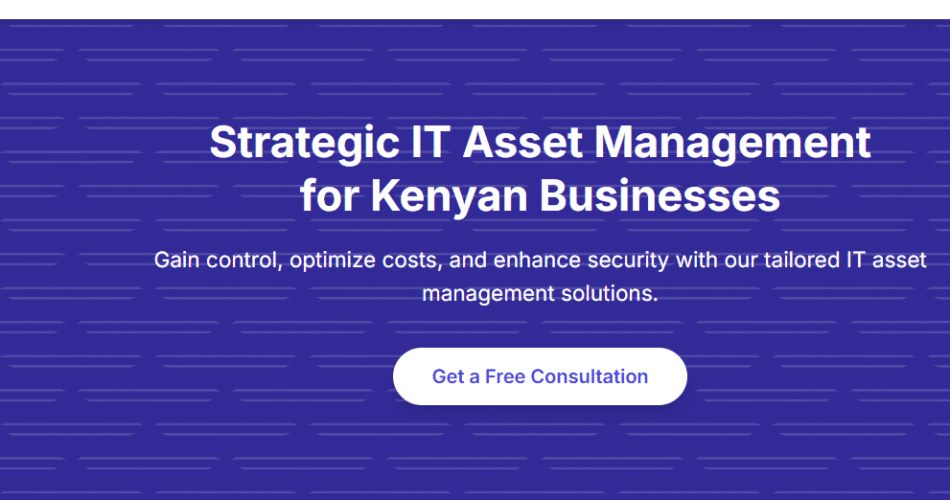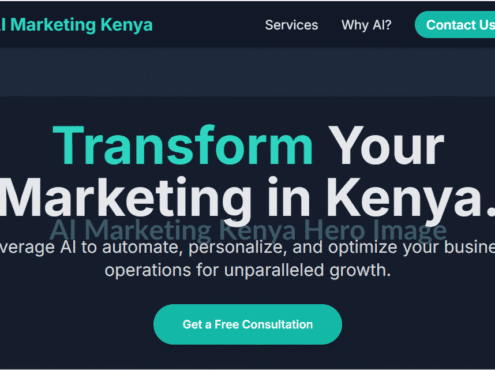IT Asset Management Kenya:
-
Delivery Time2 Weeks
-
English levelProfessional
-
LocationUSA, United Kingdom, United Arab Emirates, Nairobi, Kilimani, Kenya, Dubai, CBD Nairobi, Canada, Australia
Service Description
The cost of IT Asset Management in Kenya is 200000KES.Get IT Asset Management in Kenya at a price of 150000KES at Black Shepherd Technologies.
Transform your IT Asset Management in Kenya with our expert guide. Discover best practices for hardware and software lifecycle management, compliance, and cost optimization. Learn how to implement effective ITAM strategies tailored for Kenyan businesses.
In the dynamic and rapidly evolving business landscape of Kenya, effective IT Asset Management (ITAM) has become a critical pillar for organizational success, security, and sustainability. As companies increasingly rely on a complex ecosystem of hardware, software, and cloud-based services, the need for a robust and systematic approach to managing these assets is paramount. This comprehensive guide delves into the core principles and practical applications of ITAM, offering insights specifically tailored to the Kenyan market. We explore how businesses can move beyond mere inventory tracking to a strategic framework that drives efficiency, mitigates risk, and optimizes costs.
The journey into ITAM begins with a foundational understanding of what constitutes an IT asset. This includes tangible assets like servers, laptops, desktops, and networking equipment, as well as intangible assets such as software licenses, cloud subscriptions, and intellectual property. For Kenyan businesses, managing this diverse range of assets presents unique challenges, from navigating fluctuating import duties on hardware to ensuring compliance with local data protection regulations. This guide provides a roadmap for addressing these challenges head-on, highlighting the importance of a centralized asset repository that offers a real-time, accurate view of all IT resources.
A key component of effective ITAM is the hardware lifecycle management. This involves a four-stage process: procurement, deployment, maintenance, and disposal. In the Kenyan context, procurement strategies must be mindful of supply chain logistics and vendor relationships, while deployment requires a clear understanding of departmental needs and user access rights. The maintenance phase is crucial for ensuring the longevity and performance of assets, and this guide will outline best practices for preventative maintenance and repair. Finally, we discuss secure and environmentally responsible asset disposal, a topic of growing importance in Kenya as the country works towards a more sustainable future.
Beyond hardware, managing software assets is equally, if not more, critical. This includes tracking software licenses, ensuring compliance with vendor terms, and avoiding costly audits. We will explore how Kenyan businesses can implement Software Asset Management (SAM) tools and processes to gain a clear picture of their software usage. This includes understanding licensing models (e.g., perpetual, subscription, user-based), tracking license expiration dates, and optimizing software usage to eliminate redundancies and save money. The guide will also touch upon the rising trend of Software-as-a-Service (SaaS) and how to effectively manage these cloud-based subscriptions to prevent “SaaS sprawl” and control costs.
The benefits of a well-implemented ITAM program extend far beyond simple asset tracking. It is a strategic tool that can significantly impact a company’s bottom line and operational efficiency. By maintaining an accurate inventory, businesses can avoid over-purchasing hardware and software, leading to substantial cost savings. Furthermore, a clear understanding of your IT landscape is essential for informed decision-making, whether you are planning a technology upgrade, a cloud migration, or a major expansion. This guide will provide practical examples of how ITAM can support these strategic initiatives.The benefits of a well-implemented ITAM program extend far beyond simple asset tracking. It is a strategic tool that can significantly impact a company’s bottom line and operational efficiency. By maintaining an accurate inventory, businesses can avoid over-purchasing hardware and software, leading to substantial cost savings. Furthermore, a clear understanding of your IT landscape is essential for informed decision-making, whether you are planning a technology upgrade, a cloud migration, or a major expansion. This guide will provide practical examples of how ITAM can support these strategic initiatives.
Security and compliance are another cornerstone of modern ITAM. An up-to-date asset inventory is the first line of defense against security vulnerabilities. By knowing exactly what hardware and software are in your environment, you can more effectively manage patches, updates, and security configurations. In Kenya, with the increasing focus on data privacy and cybersecurity, this is particularly important. This guide will discuss how ITAM can help businesses comply with relevant regulations and frameworks, such as the Data Protection Act, 2019, ensuring that sensitive information is handled with the utmost care and that risks are minimized.
Local Considerations for ITAM in Kenya
For businesses operating in Kenya, a successful ITAM strategy must be sensitive to the unique local context. This includes not only legal and regulatory frameworks but also practical operational factors. The ICT Authority (ICTA), for instance, has a mandate to set and enforce ICT standards and guidelines for public service, which can also serve as a useful benchmark for private organizations. When it comes to asset disposal, adhering to environmental standards is increasingly important, with a focus on proper e-waste management to avoid both legal penalties and reputational damage.
Moreover, the cost of implementing ITAM solutions can vary widely. While some global providers offer sophisticated platforms, a range of locally-focused or scalable solutions exist. Businesses can start with a basic, low-cost solution and gradually invest in more comprehensive tools as their needs grow. Many providers offer tiered pricing, with options for managing a few hundred to thousands of assets, making ITAM accessible for businesses of all sizes. The availability of local ITAM consultants and training institutions also provides an opportunity for Kenyan organizations to build in-house expertise and ensure a successful implementation.
Conclusion
In an increasingly digitized world, IT Asset Management is no longer a “nice-to-have” but a fundamental business necessity for any organization in Kenya that seeks to be competitive, secure, and compliant. The strategic adoption of ITAM principles and practices allows businesses to gain control over their technological infrastructure, turning IT from a cost center into a strategic enabler. By focusing on the full asset lifecycle, from initial procurement to final disposal, and by leveraging automation and a centralized view of assets, Kenyan companies can significantly reduce costs, enhance their security posture, and make more informed, data-driven decisions. Ultimately, a mature ITAM program provides the foundational visibility and control needed to navigate the complexities of the modern digital economy and ensure sustainable growth for years to come.








